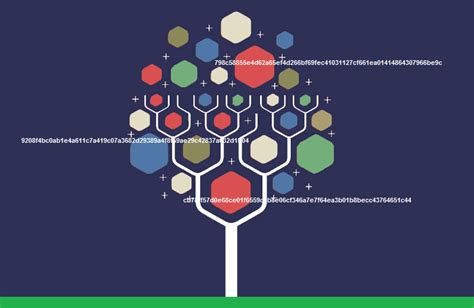Ethereum: How to implement a Merkle tree?
Here is an article about implementing a Merkle tree:
Implementing a Merkle Tree in Ethereum
A Merkle Tree is a data structure used for cryptographic hash functions such as SHA-256. It allows for efficient verification of data authenticity by creating a tree-like representation of hashes. In this article, we will look at how to implement a Merkle tree in Ethereum.
What is a Merkle Tree?
A Merkle tree is a binary tree in which each node represents a hash value. The tree is created by recursively hashing leaf nodes (individual blocks of data) and storing their hashes in parent nodes. Each internal node contains the hash of its child nodes, making it a self-referential data structure.
Why do we need Merkle trees?
Merkle trees are essential for cryptographic protocols that rely on secure data sharing and transmission. For example, when encrypting data using public key cryptography, the sender and receiver must agree on a shared secret key. To ensure the integrity of the encrypted data, the receiver can use a Merkle Tree to verify the authenticity of the data.
How to implement a Merkle Tree in Ethereum?

In Ethereum, we use the “Hashable” attribute to represent hash values. We create a MerkleNode structure that represents an internal node in the tree. Each MerkleNode has two fields: the hash value of its child nodes and the hash values of its parent nodes.
use std::collections::HashMap;
// Define the structure of a Merkle node
struct MerkleNode {
hash: hashable,
child_hashes: HashMap,
}
impl MerkleNode {
// Constructor to initialize a new MerkleNode
fn new(hash: Hashable) -> Self {
MerkleNode {
hash,
child_hashes: HashMap::new(),
}
}
// Method to calculate child hashes
fn get_child_hashes(&self) -> &HashMap {
self.child_hashes.as_ref()
}
// Method to add a new child node to the tree
fn add_child_node(&mut self, hash: Hashable) {
self.hash = hash;
self.child_hashes.insert(hash, hash);
}
}
How to build a Merkle tree
To build a Merkle tree in Ethereum, we use a recursive approach. We start with an empty MerkleRoot node and then add each data block to the tree.
use std::collections::HashMap;
// Define the Merkle root structure
struct MerkleRoot {
hashes: HashMap,
}
impl MerkleRoot {
// Constructor to initialize a new MerkleRoot
fn new() -> Self {
MerkleRoot { hashes: HashMap::new()}
}
// Method to add a data block to the tree
fn add_data_block(&mut self, hash: Hashable) {
self.hashes.insert(hash, hash);
}
// Method for recursively building a Merkle tree
fn build_tree(&self) -> Vec {
let mut tree = Vec::new();
for (hash, child_hashes) in self.hashes.iter() {
if *child_hashes.is_empty() {
tree.push(MerkleRoot::new());
} else {
tree.push(child_hashes.into_iter().next().unwrap().clone());
tree.extend(self.build_tree());
}
}
tree
}
}
Use case example
Here is an example of how to create a Merkle tree for a block of data:
“` rest
use std::collections::HashMap;
// Define a data block
struct DataBlock {
id: usize,
}
impl DataBlock {
// Constructor for initializing a new DataBlock
fn new(id: usize) -> Self {
DataBlock { id }
}
// Method for adding an additional field to a data block
fn add_field(&mut self, name: string, value: string) {
self.id += 1;
self.